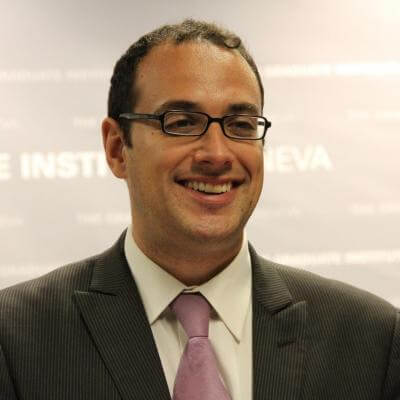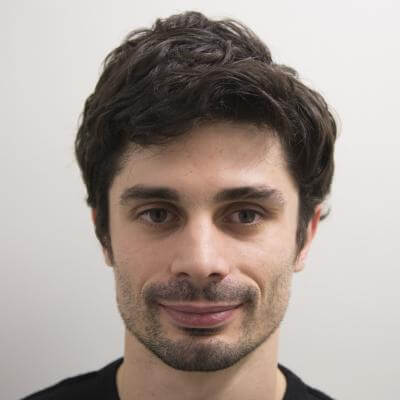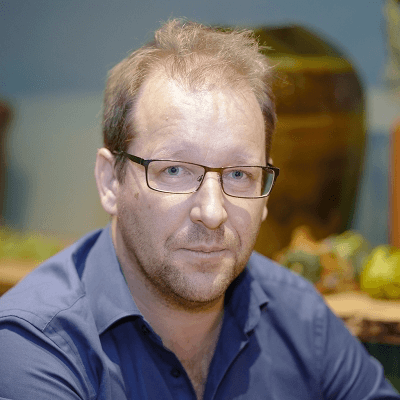Human Rights and Anthropology
A Fraught Relationship
The relationship between human rights and anthropology has been rather fraught from the start. Indeed, when in 1947 Drafting Committee members of the Universal Declaration of Human Rights (UDHR) approached the American Anthropological Association (AAA) to ask for its input, they were received with suspicion. A few months later, the Executive Board of the AAA, represented by its then president Melville Herskovits (a former student of Franz Boas) issued a statement addressed to the United Nations Commission on Human Rights in which it defended its ethical commitment to cultural relativism. The AAA board explained that it could not support “universal human rights” since such a normative project was meant to become another expression of cultural imperialism, especially with regard to notions of what it means to be human. This episode marked the beginning of a long debate between the proponents of “universalism” and the advocates of “cultural relativism”, a debate that was not resolved until the 1990s.
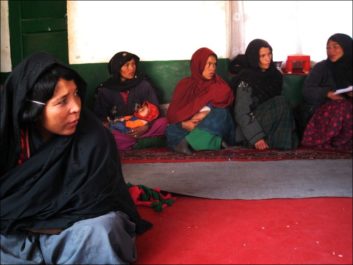 Women attending a workshop on women’s rights in Islam, Panjao, Afghanistan, 2007.
Women attending a workshop on women’s rights in Islam, Panjao, Afghanistan, 2007.In spite of their defiance toward universal standards, anthropologists were in reality deeply committed to social justice and continued to carry out behind-the-scenes advocacy with vulnerable groups, initially not using the language of human rights. But as their informants started to mobilise this language themselves, it became increasingly difficult not to support their quest for recognition, using the opportunities opened up by human rights discourses and instruments. For example, in 1962 Terence Turner began working among the Kayapo, who live in small villages in central Brazil – returning to the area on an almost annual basis. His fieldwork led to an interest in activism for the Kayapo people, whom he trained in video production as a means to voice their concerns for land and recognition. Similarly, Chickasaw anthropologist Shannon Speed carried out activist research in the Chiapas region of Mexico where she lived among a community that belongs to the Zapatista movement. Her involvement in local discussions around indigenous rights led her to assist the community with legal work, such as drafting petitions and land claims to the Mexican state.
Human rights had the unintended effects of further disempowering the rural poor while reinforcing the privileges of the economic and political elites. In 1999, the AAA finally issued a new declaration on human rights, in which it revised its initial position and recalled anthropology’s commitment “to the promotion and protection of the right of people and peoples everywhere to the full realization of their humanity, which is to say their capacity for culture”.
Human rights as dynamic social practices
In the 1980s and 1990s, a shift was initiated whereby anthropologists started to look at human rights empirically as objects of anthropological scrutiny. They did no longer conceive human rights as abstract normative categories but as dynamic social practices that had to be studied contextually so as to unravel specific cultural understandings in the use of rights. They sought to understand how rights were used, claimed, talked about as well as resisted and transgressed. By contrast to lawyers who embraced the governance matrix of human rights and took their emancipatory potential for granted, anthropologists’ engagement with rights remained willingly distanced and critical.
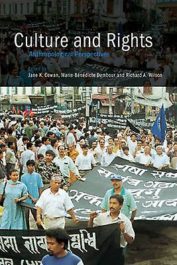
In his 1997 book Human Rights, Culture and Context, anthropologist Richard Wilson called for empirically grounded studies documenting the ways in which rights are imagined, formulated and responded to, focusing on culture and context. Likewise, in their 2001 book Culture and Rights: Anthropological Perspectives, Jane Cowan, Marie-Bénédicte Dembour and Richard Wilson brought into conversation theorisations of rights with empirical, contextual studies of rights processes, especially around “culture”. The edited volume provides ethnographic accounts of how rights actually function empirically, what human rights mean for different social actors, and how human rights relate to other transnational assemblages. They call for anthropological studies that examine how actors become enmeshed in the normative logic of human rights. An example of empirically grounded analysis of human rights in local context is Harri Englund’s book Prisoners of Freedom, in which he examines the local reception of human rights in the context of democratic transition in Malawi. Speaking Chichewa fluently, Englund offers a bleak description of the unintended effects of human rights discourses in a neoliberal economic regime. The official translation of human rights as individual “freedoms”, according to Englund, meant that many important issues, such as poverty, low wages, lack of workers’ rights, were left off the agenda. Human rights had the unintended effects of further disempowering the rural poor while reinforcing the privileges of the economic and political elites.
The transnational culture of human rights
Many other anthropologists have responded to these calls for a critical anthropology of human rights since then, notably Sally Engle Merry who systematically studied how transnational ideas such as human rights approaches to violence against women become meaningful in local social settings. Focusing on “knowledge brokers” such as community leaders and social activists, her book Human Rights and Gender Violence (2006) examines practices of translation and framing. It does not ask if human rights are good ideas but rather seeks to understand what difference they make. To answer this question, Merry compared various cultural contexts where she observed the practices of “translators” working for NGOs and community-based organisations, and spent time at the United Nations in Geneva to observe the proceedings of the UN Committee on the Elimination of Discrimination against Women (CEDAW).
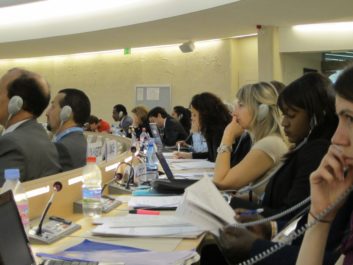 NGOs’ representatives attending the Universal Periodic Review of Greece in Palais des Nations, Geneva, 2011.
NGOs’ representatives attending the Universal Periodic Review of Greece in Palais des Nations, Geneva, 2011.Following Merry’s pioneer work at CEDAW, most recent anthropological studies of human rights processes have examined the global institutions in charge of promoting and protecting human rights worldwide. Such studies have abandoned the tradition of “giving voice to victims” to document the mundane bureaucratic work and knowledge production practices of human rights practitioners. International civil servants, experts and government representatives interacting in the global centres where human rights are produced may think that they do law. But for anthropologists, the jargon, the etiquette, the ritualistic dimension of bureaucratic processes set in motion by human rights are characteristic of a distinct culture: the transnational culture of secular modernity. By considering institutions of global governance as social worlds with distinct characters, recent ethnographies of human rights processes and institutions invite scholars to adopt a new gaze and to look at the many small (including mundane bureaucratic, institutional and administrative) activities which collectively contribute to making human rights “real” in the world. Such anthropological inquiries highlight the importance of remaining surprised by practices that can initially appear insignificant and even, at times, “boring”. But this focus on processes instead of outcomes, notably the attention paid to the production of highly opaque forms of knowledge, has enabled to overcome the rather dated debate on the universality of human rights. More importantly, this strand of anthropological investigation gives a human face to these world-reforming institutions, revealing the experiences and moral commitments – infused with hopes, ideals and frustrations – at the origin of official findings and the recommendations of policy papers.
PODCAST: Human Rights and the International Criminal Court with Paola Gaeta
Global Challenges n° 11 – The Uncertain Future of Human Rights. With Dominic Eggel and Marc Galvin (Research Office – The Graduate Institute, Geneva)
PODCAST: The Universality of Human Rights with Huaru Kang
Global Challenges n° 11 (The Uncertain Future of Human Rights). With Dominic Eggel and Marc Galvin (Research Office – The Graduate Institute, Geneva)
PODCAST: Human Rights and Social Media with Stefania Di Stefano
Global Challenges n° 11 – The Uncertain Future of Human Rights. With Dominic Eggel and Marc Galvin (Research Office – The Graduate Institute, Geneva)
PODCAST: Human Rights versus Nature and Animals Rights? with Anna Ploeg
Global Challenges n° 11 – The Uncertain Future of Human Rights. With Dominic Eggel and Marc Galvin (Research Office – The Graduate Institute, Geneva)
PODCAST: Human Rights and Business, with Jérôme Bellion-Jourdan
Global Challenges n° 11 – The Uncertain Future of Human Rights. With Dominic Eggel and Marc Galvin (Research Office – The Graduate Institute, Geneva)
PODCAST: Human Rights Narratives with Tomas Morochovic
Research Office – Graduate Institute, Geneva.
VIDEO: Human Rights and Humanitarian Law in the 21st Century, with Gloria Gaggioli
Global Challenges n° 11 – The Uncertain Future of Human Rights – The Graduate Institute, Geneva
TIMELINE: Major International Human Rights Treaties
The Universal Declaration was the first detailed expression of the basic rights and fundamental freedoms to which all human beings are entitled.
The Convention on the Prevention and Punishment of the Crime of Genocide was adopted by the UN in an effort to prevent atrocities, such as the Holocaust, from happening again. The Convention defines the crime of genocide.
The Convention relating to the Status of Refugees protects the rights of people who are forced to flee their home country for fear of persecution on specific grounds.
The Discrimination (Employment and Occupation) Convention (No. 111) of the International Labour Organization prohibits discrimination at work on many grounds, including race, sex, religion, political opinion and social origin.
The International Convention on the Elimination of All Forms of Racial Discrimination (ICERD) obliges states to take steps to prohibit racial discrimination and promote understanding among all races.
The International Covenant on Economic, Social and Cultural Rights (ICESCR) protects rights like the right to an adequate standard of living, education, work, healthcare, and social security. The ICESCR and the ICCPR (below) build on the Universal Declaration of Human Rights by creating binding obligations for state parties.
Human rights protected by the International Covenant on Civil and Political Rights (ICCPR) include the right to vote, the right to freedom of association, the right to a fair trial, the right to privacy, and the right to freedom of religion. The First Optional Protocol to the ICCPR creates a mechanism for individuals to make complaints about breaches of their rights. The Second Optional Protocol concerns abolition of the death penalty.
Under the Convention on the Elimination of All forms of Discrimination against Women (CEDAW), states must take steps to eliminate discrimination against women and to ensure that women enjoy human rights to the same degree as men in a range of areas, including education, employment, healthcare and family life. The Optional Protocol establishes a mechanism for making complaints.
The Indigenous and Tribal Peoples Convention (No. 169) of the International Labour Organization aims to protect the rights of Indigenous and tribal peoples around the world. It is based on respect for the right of Indigenous peoples to maintain their own identities and to decide their own path for development in all areas including land rights, customary law, health and employment.
The International Convention on the Protection of the Rights of All Migrant Workers and Members of Their Families aims to ensure that migrant workers enjoy full protection of their human rights, regardless of their legal status.
The Convention on the Rights of Persons with Disabilities aims to promote, protect and ensure the full and equal enjoyment of all human rights by persons with disability. It includes the right to health, education, employment, accessibility, and non-discrimination. The Optional Protocol establishes an individual complaints mechanism.
This Declaration establishes minimum standards for the enjoyment of individual and collective rights by Indigenous peoples. These include the right to effectively participate in decision-making on matters which affect them, and the right to pursue their own priorities for economic, social and cultural development.
This Declaration asserts that everyone has the right to know, seek and receive information about all human rights and fundamental freedoms and should have access to human rights education and training.
Based on the information produced by the Australian Human Rights Commission
